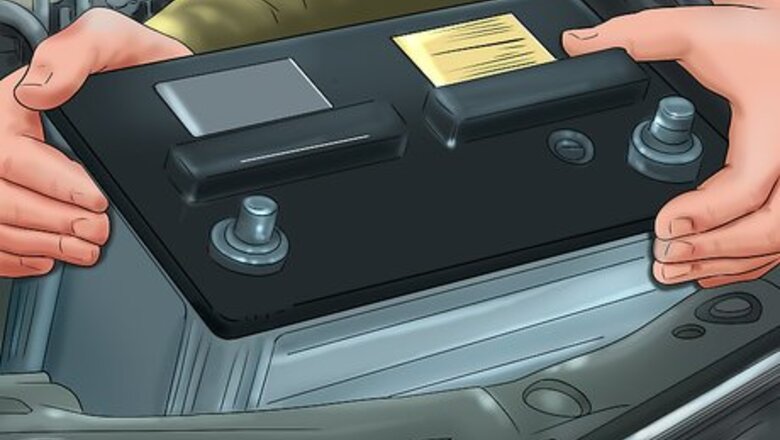
views
Jumping the Battery
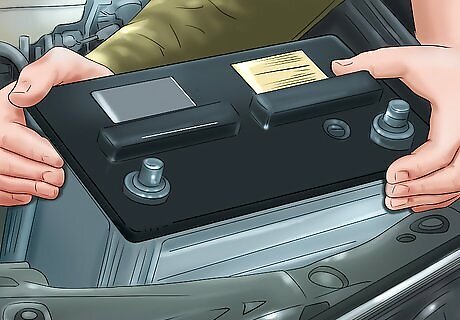
Open each car's hood and locate the battery. Some vehicles have surprising and hard to reach battery locations, and you need to be sure where the battery is located on your car. On most cars, it will be near the front of the car on the right or left side, but on some cars the battery is located near the firewall between the engine and passenger compartment. In some cars the battery is located in the trunk. If unsure, check your car manual for the location of the battery. Identify the positive and negative terminals. The positive terminal will be marked with a plus sign (+) and will usually have a red cable attached on it. The negative terminal will be marked with a minus sign (-) and will usually have a black cable attached to it.
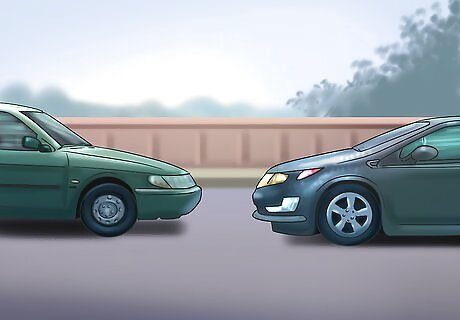
Park the working car near, but not touching, the disabled car. Park the car in such a way that the distance between both car batteries is as small as possible, so that the jumper cables can reach both batteries. Turn off the engine, radio, lights, A/C, fans and all other electrical components. Make sure that all of these things are off in the disabled car, too. Don't let the cars touch at all. Park the car in a safe place with the steering wheel pointed away from traffic or hazards. If the cars are touching, jumping the battery can cause a dangerous electrical arc between the vehicles.

Put on safety gear (goggles and gloves) if you have it. Inspect batteries for cracks, leaks or other damage. If you find any of these things, do not jump start the car. Call a tow truck instead or replace the battery. Check that the battery cables are firmly connected to the battery posts. Loose cables can prevent a vehicle from starting yet allow the radio and lights to appear normal. Use a proper sized wrench to tighten the cable terminal to the battery post. Avoid touching any other part of the vehicle with the wrench when it is on the terminal as a large spark and explosion can occur. If you are unable to tighten the terminal enough to prevent it from moving, in an emergency, you can use a metal shim made from a soda or tin can. Place the shim between the battery post and the cable terminal to allow it to be sufficiently tightened to prevent the terminal from moving on the battery post. Replace the battery cable/terminal as soon as possible. This is not a long term fix. It may be necessary to remove the disabled automobile's battery cables from the battery terminals and clean both cables and terminals. Corrosion between the battery and cable terminals can prevent a vehicle from starting. Use a stiff wire brush to remove all corrosion. Reconnect the cables to the battery terminals and jump the car. Remove any positive (+) red post protective covers if applicable.

Untangle and unwind your jumper cables. Like your battery, your jumper cables will probably have red and black cables and will have heavy-duty clamps to connect to the battery terminals. You must make sure that the red and black ends of your jumper cables never touch each other once they are connected to the batteries; permitting them to do so can result in serious arcing and/or damage to one or both cars. Working with a helper holding the other end of the jumper cables and keeping the clamps separate would be ideal.

Connect the jumper cables in the order described below: Connect one red clamp to the positive (+) terminal of the dead battery. Connect the other red clamp to the positive (+) terminal of the good battery. Connect one black clamp to the negative (-) terminal of the good battery. Connect the other black clamp to a piece of grounded metal on the dead car, preferably the bolt where the thick negative cable from the battery connects to the chassis. If this is not practical, look for shiny metal (not painted or oily) that is attached to the engine. Usually a nut, bolt or other protruding shiny metal will work. You may see a small spark when you connect to a good ground. As a last resort, you may connect to the negative (-) post of the dead battery, but this risks igniting hydrogen gas coming off the battery. Some cars have the battery hidden under additional electronics, in which case you will need to look for the terminals labeled "-" and "+". Make sure none of the cables are dangling into the engine compartment, where they could be exposed to moving parts. Ensure battery compatibility before jumping. "I had a 6-volt Nissan battery that needed a jump. I wondered if I could use my 12-volt Honda, but I wasn't sure. This article clearly explained that jumping between different voltage batteries is a big no-no and could actually cause damage. Now I know to jump-start cars only with matching battery voltages." - Harry R. Gain confidence in a new skill. "I'd never jump-started a car by myself before reading this. But it broke things down into easy step-by-step instructions with photos. Now, I feel totally confident that I can safely jump a dead battery when I need to. The tips on connecting the cables in the right order and grounding to bare metal were super helpful." - Jessica R. Share insider knowledge with the public. "After working at an auto shop for years, I've seen most people not fully get jump-starting. This article clearly covers everything — from making sure it's the battery to connecting the cables properly to running the car afterward. It's great to have a resource sharing this insider knowledge with regular people like me." - Larry V. Avoid common mistakes. "The explanations around not letting the cars touch, using the negative cable on bare metal, and removing cables in reverse order were new to me. Without knowing this I probably would've made those mistakes. Now I know how to avoid shorts, sparks, and damage while getting the job done right." - Debbi C. We want to hear from you! Advice from our readers makes our articles better. If you have a story you’d like to share, tell us here.
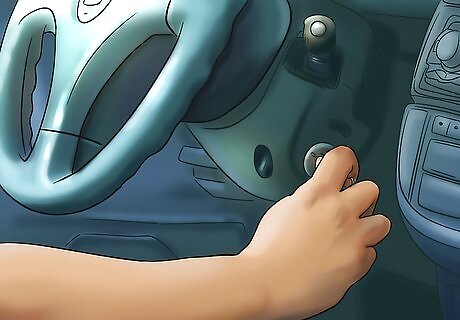
Start the working car. Let it idle for a few minutes. Do not race the engine, but do rev the engine a little above idle for 30 to 60 seconds. You do this to charge the battery in the dead car, because the starter in the dead car will draw most of the required current (well in excess of 100 amps) from that battery, not through the cables. Common retail jumper cables are not built to pass the current required. Charging the dead battery is a must. If 30 seconds doesn't do it, try charging for the full 60 seconds by keeping the engine at a high idle. A good, clean connection between the battery cables and the battery terminals is essential.
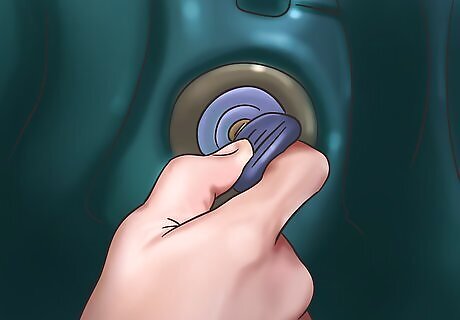
Try to start the disabled vehicle. If it does not start, shut the engine off and disconnect the last connection temporarily while you slightly twist or wiggle each of the four clamps to help ensure a good electrical connection. Restart the working car again. Allow another five minutes for charging before attempting to start the disabled vehicle. If this does not work after a few tries, you may need to have the car towed or the battery replaced.
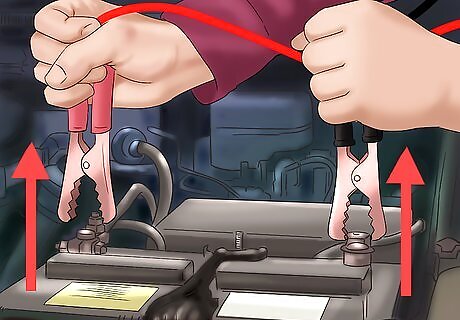
Remove the jumper cables once the car starts. Do this in the reverse of the order in which they were attached, and don't let any of the cables or clamps touch each other (or dangle into the engine compartment). Disconnect the black clamp from grounded metal on the dead car. Disconnect the black clamp from the negative (-) terminal of the good battery. Disconnect the red clamp from the positive (+) terminal of the good battery. Disconnect the red clamp from the positive (+) terminal of the dead battery. Replace any positive (+) red post protective covers if applicable. These covers help prevent accidental short circuiting the battery.
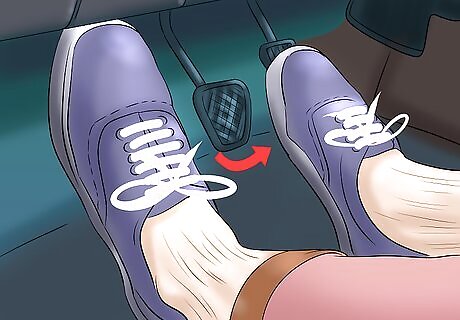
Keep the recently-disabled car's engine running. Run the car above idle (slightly revved up with your foot on the gas) for five minutes and then on or above idle for 20 minutes before turning it off. This should give the battery enough charge to start the car again. If it does not, you probably have a dead battery or a dying alternator.
Without Cables (Manual Transmission only)
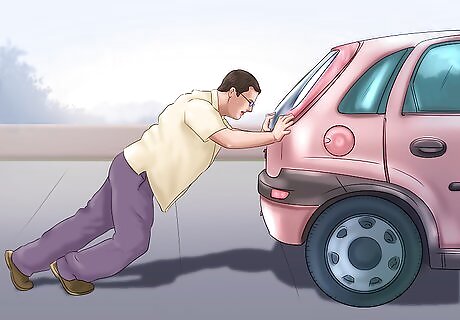
Position the car at the top of a hill, or have people push the car.
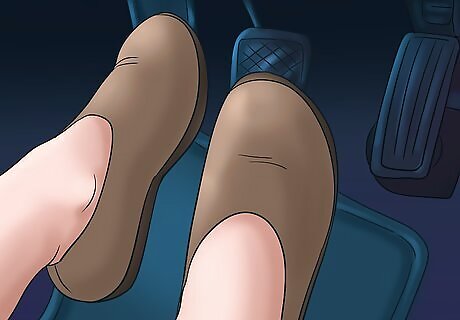
Depress the clutch completely.
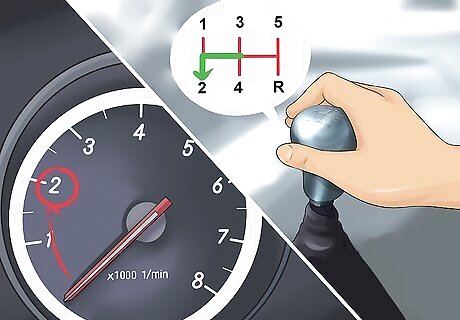
Put the car in second gear.
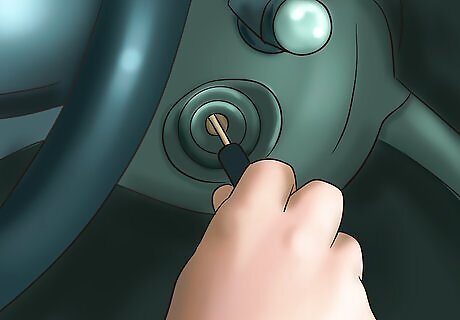
Turn on the ignition but don't start the engine. This is also known as key position two. The key is inserted and turned one step to the right. Turning one step further would start the engine, which you don't want to do.

Let go of the brakes. Keep the clutch depressed. You'll start coasting down the hill or moving due to people pushing.
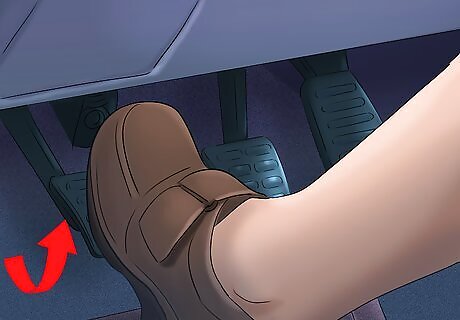
Let go of the clutch quickly when the speed reaches 5 mph (8.0 km/h). The engine should turn and start. If it doesn't, try depressing and releasing the clutch again.

















Comments
0 comment